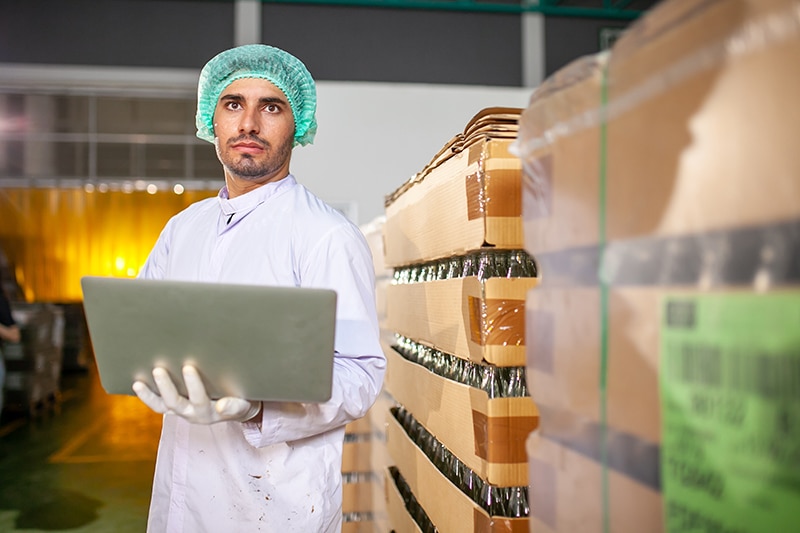One of the most profitable industrial sectors, the food industry has witnessed remarkable transformation over the past decade. Driven by advancements in technology, the industry lays a greater emphasis on efficiency, safety, and customer satisfaction. However, with the increase in global competition, companies in this sector face numerous challenges associated with reducing supply chain waste, optimizing supply chain efficiency, boosting sustainable growth, implementing green policies, and finding a competitive advantage. To deal with such challenges, businesses in the food industry need to focus on leveraging big data and analytics to keep close tabs on new supply chain trends and competitors’ market progress. Right from production and distribution to consumer interaction and waste reduction, big data in the food industry and the use of analytics are reshaping every corner of the food sector.
In this post, we explore how data-driven decision making, customer behavior analytics, data entry and processing services, and technologies are playing a pivotal role in modernizing food businesses and ensuring sustainable, efficient, and safe practices.
Overview of Big Data Analytics in the Food Industry
Big data analytics is revolutionizing the food industry by empowering data-driven decision-making throughout the entire value chain – from product development and supply chain management to personalized customer experiences. By analyzing vast amounts of both structured and unstructured data, food businesses can uncover valuable insights that drive innovation, boost operational efficiency, and strengthen food safety measures. Additionally, with the use of customer behavior analytics, companies can better understand consumer preferences, tailor offerings, ultimately enhancing customer satisfaction and loyalty.
How Big Data Improves Food Supply Chain Efficiency
The food supply chain is a complex ecosystem involving multiple stakeholders, including farmers, suppliers, manufacturers, and distributors. Delays, inefficiencies, and lack of transparency have long plagued the system, leading to increased costs and food wastage. This is where big data dramatically improves food supply chain efficiency. By collecting real-time data across the supply chain, businesses gain visibility into production rates, transportation timelines, and inventory levels. This allows them to predict shortages, avoid overproduction, and ensure that food reaches consumers at the right time and in optimal condition.
In addition, Big data supports demand forecasting by analyzing historical sales patterns, weather trends, and market fluctuations – enabling producers and retailers to plan more accurately. With streamlined supply chain operations, not only is waste reduced, but profitability and customer satisfaction see a noticeable boost.
How Is Big Data and Analytics Revolutionizing the Food Industry?
- Improve Operational Efficiency – Right from analyzing the food industry trends to the effect temperature has on food quality, big data and analytics can help food industry businesses to ensure that they always deliver the best quality possible. But this is not the only way big data and analytics can improve operational efficiency. In addition, it can help in analyzing customer behavior using their shopping data. By applying predictive analytics to historic shopping data companies in the food industry can cut the average checkout wait time. Big data and analytics can also help in analyzing market trends and suggest optimum inventory levels at different locations.
- Optimize Food Production and Supply Chain – AI-powered predictive analytics can forecast demand, optimize inventory, and streamline logistics to reduce waste and improve efficiency. Machine learning algorithms analyze data from sensors, drones, and satellites to monitor crop health, detect pests/diseases, and optimize farming practices.
- Enhancing Food Safety and Quality Control – AI can help automate food inspection and quality assurance processes to identify contaminants, defects, and safety issues. AI-enabled monitoring can track compliance with food safety protocols in real time across production and distribution.
- Personalizing the Consumer Experience – One of the most significant applications of big data in the food industry is understanding the consumer. Customer behavior analytics enables businesses to dig deep into the preferences, purchase habits, and satisfaction levels of their audience. By leveraging data from loyalty programs, mobile apps, and online ordering platforms, companies can segment their customer base and offer personalized promotions, improve product offerings, and enhance service delivery. Furthermore, predictive analytics can forecast future behavior – helping brands anticipate customer needs and proactively address them, ultimately building loyalty and boosting revenue.
- Improving Sustainability – AI and data analytics enable more precise forecasting, inventory management, and route optimization to minimize food waste and emissions across the supply chain. Precision farming techniques powered by AI/ML help farmers optimize resource usage, increase yields, and adopt more sustainable agricultural practices.
- Simplify Production Tracking – Data analytics can help food and beverage businesses by simplifying production tracking. By looking at product-level data, companies can recognize opportunities for improvement and weaknesses in internal processes. For instance, data analytics can disclose the present level of orders, how many items are ready for delivery, and which department has the longest order hold times. Based on this data, companies can make decisions related to delivery timing, staffing, and inventory.
- Predictive Analytics – Food and beverage companies use data analytics to guess future trends. This lets them modify their pricing strategy, promotional offers and production process based on predicting upcoming inflation rates. Food data analytics can be used by companies to create predictive models and AI bots can be used to keep an eye on market trends. AI-based predictive models are also helping companies to stay ahead of the market and be profitable.
- IoT and Analytics in Food Safety Monitoring – The role of IoT and analytics in food safety monitoring has become increasingly prominent in ensuring traceability and quality control. IoT-enabled devices, such as smart sensors and RFID tags, can monitor temperature, humidity, and handling conditions throughout the food transportation and storage process. These devices feed real-time data into analytics platforms that detect anomalies, predict risks, and alert operators before problems escalate.
The integration of big data in the food industry and advanced analytics will become even more central to the success of this sector. From improving product innovation to enabling sustainable practices and enhancing consumer trust, the opportunities are endless. Companies that adopt data-driven decision making, leverage customer behavior analytics, and maintain clean datasets through reliable data entry services are setting themselves up for long-term success. By integrating technologies like IoT for enhanced food safety monitoring, these businesses are better positioned to stay competitive in today’s fast-evolving market.
Take the first step toward a smarter, data-powered food business today.




